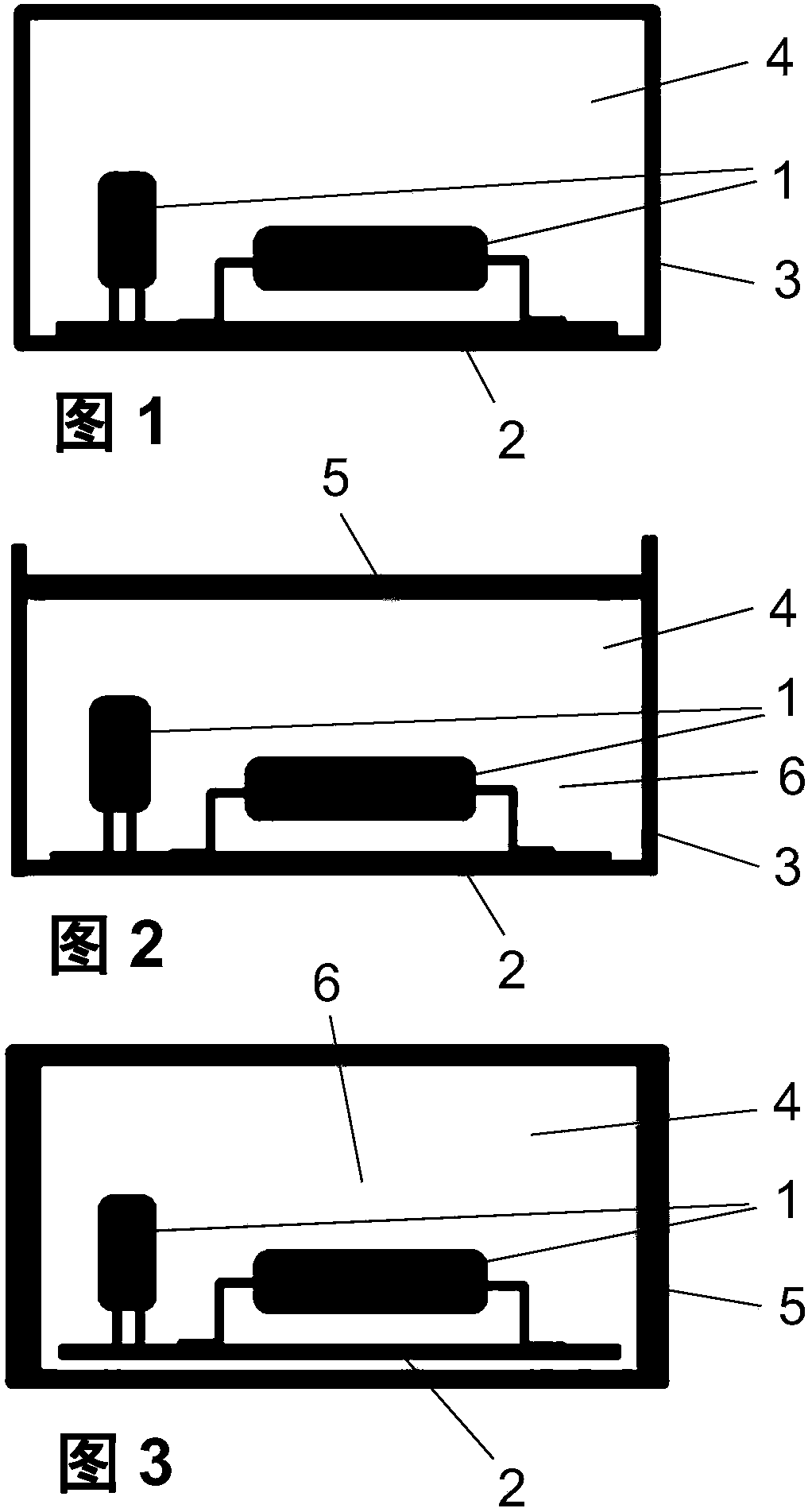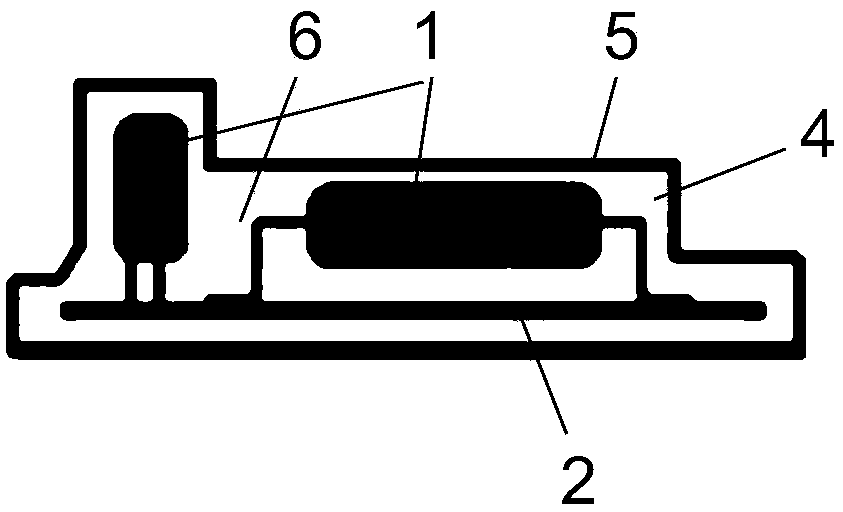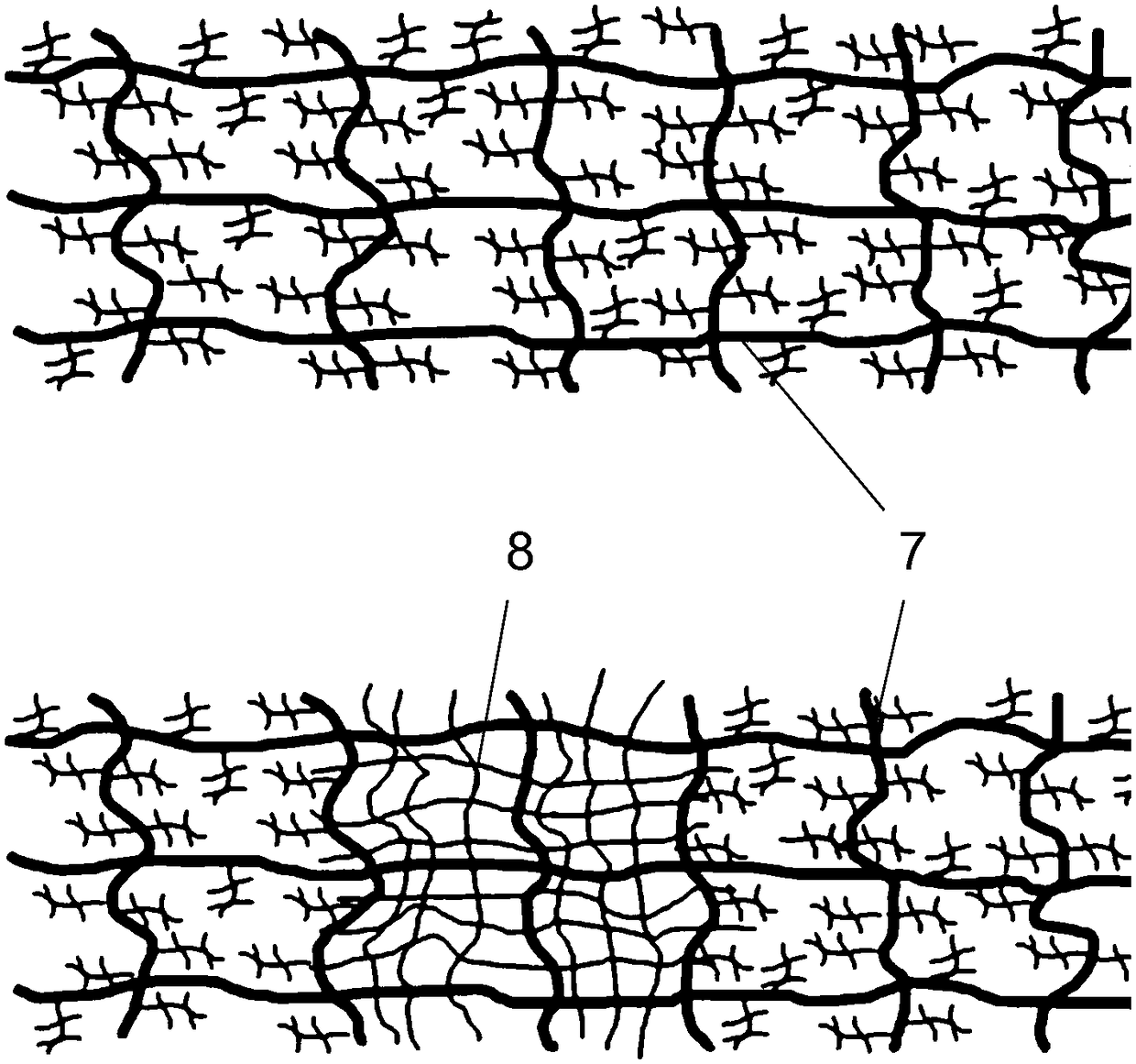Method and curable compound for casting electronic components or component groups
A technology of electronic components and compositions, which is applied in the fields of electrical components, electric solid-state devices, semiconductor/solid-state device components, etc., can solve problems such as high cost, achieve the effect of small mechanical load and achieve the effect of integration density
- Summary
- Abstract
- Description
- Claims
- Application Information
AI Technical Summary
Problems solved by technology
Method used
Image
Examples
Embodiment 1
[0062] In the first embodiment, SR368 was used as the acrylate component. Amino terminated polyethers with different chain lengths (Jeffamine D-400 and D-2000) and IPDA were used as amine components. Cycloaliphatic IPOX ER 15 is mixed into the formulation as an epoxy resin to bond the amine hardener. DBU was used to catalyze Michael addition. As a photoinitiator, Irgacure 819 was used to prepare a tensile test piece with a thickness of 2 mm, and Irgacure 184 was used to test the penetration depth of irradiation. The formulations of hardenable compositions thus obtained had the compositions given in the table below.
[0063] components
quantity
SR368
5g
IPOX ER 15
0.5g
Jeffamine D-2000
1g
Jeffamine D-400
0.7g
IPDA
0.85g
Irgacure 184 or 819
10mg
DBU
50mg
[0064] After filling the test piece mold, one half of the test piece was irradiated in UVA-CUBE 2000 for 2 minutes, and the other hal...
Embodiment 2
[0070] In the second embodiment, SR368 and SR833S were used as the acrylate component. Polyethers with different chain lengths (Jeffamine D-400 and D-2000) and IPDA were used as amine components. DGEBA is incorporated into the formulation as an epoxy resin to bond the amine hardener. DBU was used to catalyze Michael addition. Irgacure 819 was used as photoinitiator. The following formulations of hardenable compositions result from these ingredients:
[0071] components
quantity
SR368
1g
SR833S
4g
DGEBA
0.5g
Jeffamine D-2000
1g
Jeffamine D-400
0.7g
IPDA
0.85g
Irgacure 819
10mg
DBU
50mg
[0072] After filling the test piece mold, one half of the test piece was irradiated in UVA-CUBE 2000 for 5 minutes, and the other half was protected from light. All test pieces were subsequently hardened together in an oven at 110° C. for 2 hours and at 180° C. for 2 hours. In this case a ri...
Embodiment 3
[0076] In the third example, SR833S was used as the acrylate component. Priamine (mixture of aminated monomers, dimers and trimers of oleic acid; aliphatic backbone) and 2,2,4-trimethylhexane-1,6-diamine were used as amine components. As an epoxy resin, DGEBA is mixed in the formulation to bond the amine hardener. DBU was used to catalyze Michael addition. Irgacure 819 was used as photoinitiator. The following formulations of hardenable compositions result from these ingredients:
[0077] components
quantity
SR833S
5g
DGEBA
0.75g
Priamine 1075
0.74g
2,2,4-trimethylhexane-1,6-diamine
1.26g
Irgacure 819
10mg
DBU
50mg
[0078] After filling the test piece mold, one half of the test piece is irradiated in the UVA-CUBE 2000 for 5 minutes, and the other half must be protected from the light. All test pieces were subsequently hardened together in an oven at 110° C. for 2 hours, at 150° C. for 2.5 hour...
PUM
 Login to View More
Login to View More Abstract
Description
Claims
Application Information
 Login to View More
Login to View More - R&D
- Intellectual Property
- Life Sciences
- Materials
- Tech Scout
- Unparalleled Data Quality
- Higher Quality Content
- 60% Fewer Hallucinations
Browse by: Latest US Patents, China's latest patents, Technical Efficacy Thesaurus, Application Domain, Technology Topic, Popular Technical Reports.
© 2025 PatSnap. All rights reserved.Legal|Privacy policy|Modern Slavery Act Transparency Statement|Sitemap|About US| Contact US: help@patsnap.com



